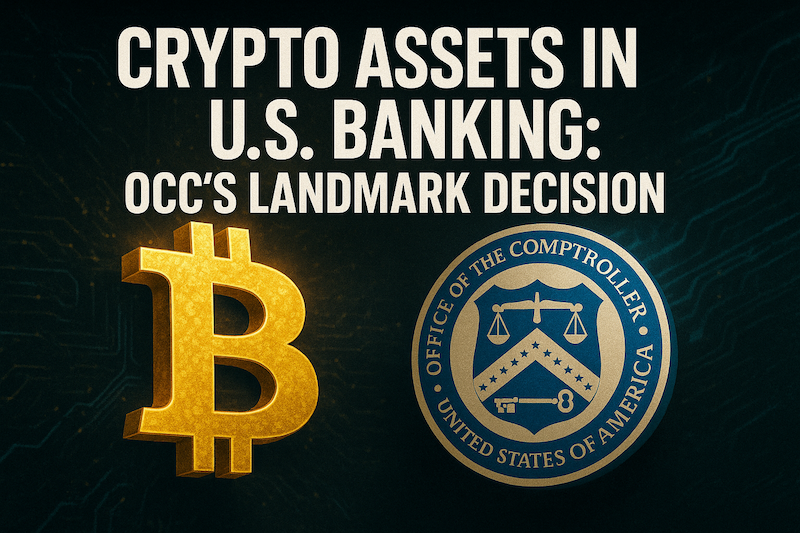The US Office of the Comptroller of the Currency (OCC) has put forth a large scale regulatory change. We see that national banks are now include in the right to trade in crypto assets. This will take effect May 7, 2025 and line with the pro crypto approach seen under the Trump admin. It marks the beginning of crypto’s greater role in the traditional finance space.
OCC’s Interpretive Letter: A New Crypto Asset Model
The OCC’s recent interpretation allows national banks and federal savings associations to service customer crypto assets. It’s seen as a break from the past. Under the Biden administration, policies were very restrictive. We see this move allowing banks to begin to store and trade in crypto. They will follow proven bank models. Additionally, this change aims to put cryptos within the same regulatory framework as traditional securities. This is meant to increase their acceptance in the financial community.
Crypto Asset Services and Bank Integration
Banks can now provide services which include holding private keys, and executing buy/sell transactions. They can also outsource these to third parties. They must put in place tight risk management measures. These particularly apply to cyber security and anti money laundering (AML) compliance. The policy’s aim is to smooth out crypto to fiat conversion processes. This includes the setup of transaction settlement and tax reporting structures.
The Rescinding of Previous Restrictions
In the past, banks had to get approval for crypto related activities. The present policy has done away with that requirement. This gives banks more freedom in the digital assets space. Also, as part of its initiative to promote innovation in blockchain tech, at the same time the management of financial risk is being addressed.
Third-Party Custodians and Risk Management
A key element of what the OCC put forth is outsourcing crypto asset storage to regulated third parties. This allows financial institutions to report to crypto native companies. These, in turn, report to regulators. Thus, they uphold AML and other regulatory requirements. Additionally, we may see a growth of a hybrid ecosystem. This ecosystem sees traditional finance and blockchain technology working together.
Crypto Asset Oversight by the Federal Reserve and FDIC
After the OCC’s report, other regulatory bodies, including the Federal Reserve and the FDIC, have issued revised guidance on crypto assets. We see this as part of a larger trend towards less regulation of cryptocurrencies. This in turn allows banks to include them in their product lines without needing great prior approval.
Political and Industry Reactions
The Trump administration pushed a very pro crypto agenda. This is evident in the regulatory shift. This shift was received well by large players in the crypto space, including Coinbase and Circle. They see it as a great step toward institutional use of digital assets. In contrast, traditional financial institutions like JPMorgan and Bank of America are taking a wait and see approach. They are concerned about AML issues.
Challenges Ahead
Despite progress in that area, many issues remain. Banks will have to navigate a very complex regulatory structure. In the case of AML, this poses a large scale problem for most financial institutions. Additionally, we see state level regulations as an issue. For example, New York’s BitLicense is a prime example. It also introduces issues that limit the full integration of crypto assets.
Conclusion
The release of the OCC’s latest report on crypto assets marks a major turn in U.S. banking policy. Although the decision is a blow to some in the traditional banking sector, it is a victory for crypto supporters. However, it brings issues of regulation and operation. These issues will ultimately determine the success of this new framework. For banks to truly capitalize on this, they will need to establish strong infrastructure and compliance frameworks. Furthermore, forming partnerships with fintech companies is crucial. This changing environment will play a key role in shaping the role of crypto assets in the U.S. financial system.

